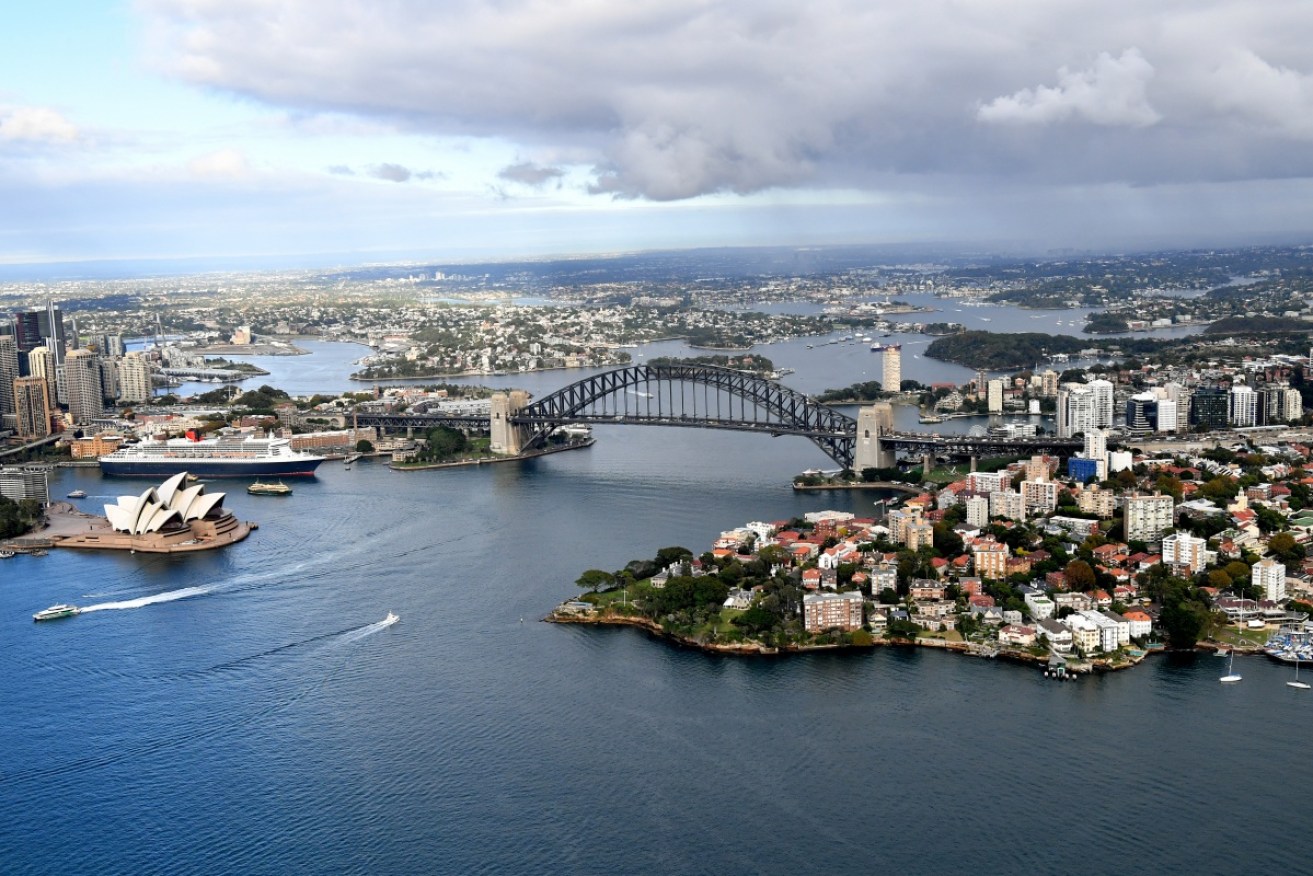Debunking the myth Sydney is ‘full’


With the right planning, experts say Sydney has plenty of scope to grow. Photo: AAP
Debate over whether Australia’s most populous city has reached capacity hit fever pitch this week, as Greater Sydney Commission chief commissioner Lucy Turnbull defended her vision for a growing city.
Sydney is “far from full”, Mrs Turnbull told The Daily Telegraph, spruiking the Greater Sydney Commission’s (GSC) plan to transform Sydney into a metropolis of three cities over the next 40 years.
“We need to make sure that growth is well planned so that people understand their quality of life will not be diminished by the creation of housing,” the former Lord Mayor of Sydney said.
In March, the GSC announced a radical reimagining of Australia’s most populous city, in a report titled A Metropolis of Three Cities: The Greater Sydney Region Plan.
Described by the GSC as an “economic powerhouse”, the population of Greater Sydney is forecast to grow to more than 8 million by 2050, largely driven by overseas migration.
Earlier in the week, One Nation Senator Pauline Hanson appeared on Sky News, calling Mrs Turnbull “out of touch”, while Tony Abbott, the Member for Warringah in Sydney’s affluent northern beaches, took to talkback radio to express his displeasure with Mrs Turnbull’s vision for an expansive Greater Sydney.
“We’re full and frankly we’re fed up with not being given the infrastructure that even the existing population densities deserve,” the former prime minister told 2GB.
However, world renowned urbanist Dr Greg Clark says Sydney is merely experiencing “growing pains”, and has the potential to join the “top elite of cities around the world” over the next few decades
“Sydney might be feeling full for some people, but it needs to reawaken its appetite for the city it could be,” he said.
“These are the growing pains of a successful and attractive city that happens to be in the throes of attracting more population than anyone expected and planned for.”
In Australia to launch a report he co-authored for the Property Council of Australia titled Creating Great Australian Cities, Dr Clark supports the GSC’s plan for a three-city metropolis.
“The GSC plan is exactly right, Sydney needs to be a multi-centred city,” Dr Clark said.
“One of the reasons you have this sense of feeling ‘full’ is that you have one area with all the jobs and all of the people trying to travel in and out.
“The good news is the GSC has put in place the right plan, what they need to do is pursue these plans and vigorously implement them.”
‘A 30-minute city’
Rather than a single Sydney that continues to sprawl outwards, the GSC envisions a three-city metropolis, where people live within 30 minutes of their workplaces and other essential amenities.
According to the plan, Greater Sydney will be divided into three cities: the Eastern Harbour City, the Central River City, and the Western Parkland City.

A metropolis of three cities. Source: Greater Sydney Commission
“This plan aspires to a 30-minute city, where jobs, services, and quality public spaces are in easy reach of people’s homes,” Mrs Turnbull said.
The cities will be “efficient” and “resilient” low-carbon metropolises, with people and places capable of adapting to climate change and “future shocks and stresses”, the report states.
Accommodating a growing population
Sydney has a population of 5.1 million, with overseas migration in 2016-17 accounting for 85,000 of a total 102,000 increase in population, according to the Australian Bureau of Statistics.
According to the GSC a minimum of 725,000 new dwellings are required by 2036 in order to accommodate Greater Sydney’s growing population.

Greater Sydney will require 725,000 new dwellings by 2036. Source: Greater Sydney Commission
“Sydney has the capacity to be a much bigger city in terms of population than it currently is,” Dr Clark said.
“There’s no sense that it is full with regards to its potential. But the systems of investment over the last few decades have not been consistent for it to achieve its potential.”
With house prices out of reach to many, and rental stress common among low and middle income earners , some have questioned how Sydney will accomodate a growing population.
According to Dr Clark, the solution to Sydney’s housing affordability crisis lies not only in increasing the housing supply, but in creating more appealing public spaces with the right mix of amenities.
“In order to feel less full, we need to change the housing tenure—not just through high density housing in the city centre, but by creating medium density, high amenity housing,” he said.
Improving the quality of public spaces and amenities through “placemaking” is also crucial to improving liveability and affordability as Greater Sydney grows.
“The more you focus on creating great places, the more it will be possible to improve the [cost] of housing by introducing different types of housing and different models of ownership including shared ownership, social ownership, public ownership and private,” he said.
“You need a much more sophisticated solution on the housing side.”








